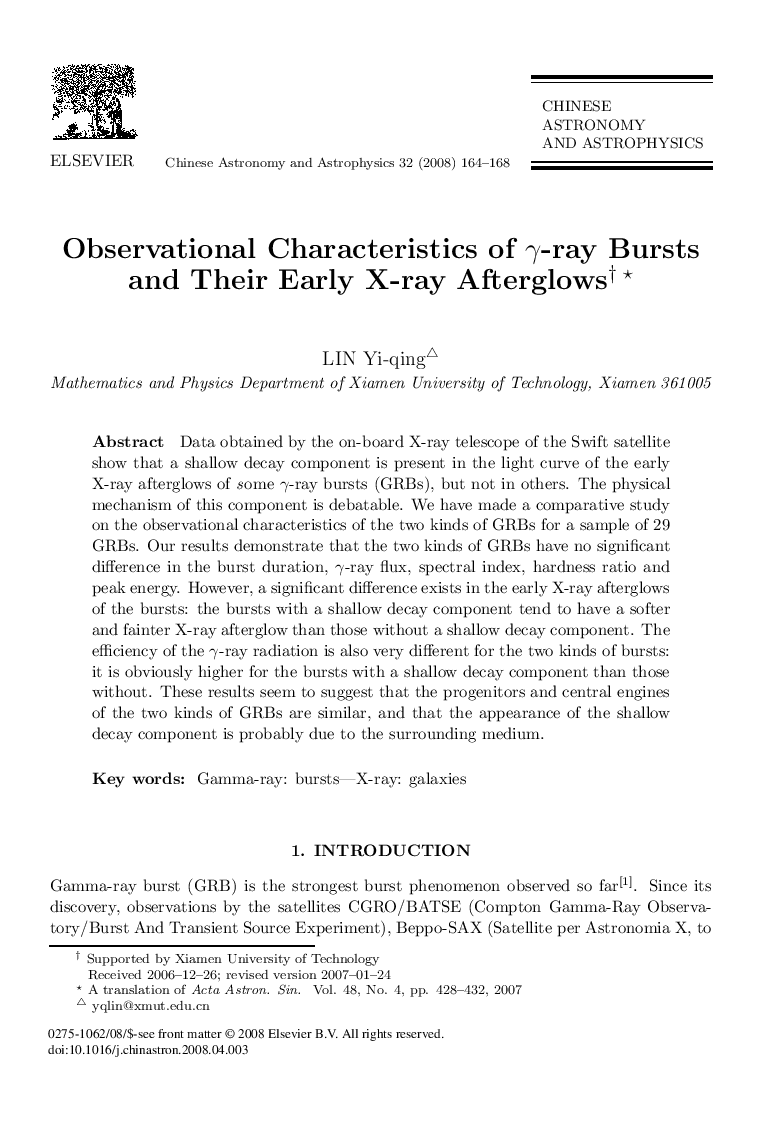| Article ID | Journal | Published Year | Pages | File Type |
|---|---|---|---|---|
| 1772190 | Chinese Astronomy and Astrophysics | 2008 | 5 Pages |
Data obtained by the on-board X-ray telescope of the Swift satellite show that a shallow decay component is present in the light curve of the early X-ray afterglows of some γ-ray bursts (GRBs), but not in others. The physical mechanism of this component is debatable. We have made a comparative study on the observational characteristics of the two kinds of GRBs for a sample of 29 GRBs. Our results demonstrate that the two kinds of GRBs have no significant difference in the burst duration, γ-ray flux, spectral index, hardness ratio and peak energy. However, a significant difference exists in the early X-ray afterglows of the bursts: the bursts with a shallow decay component tend to have a softer and fainter X-ray afterglow than those without a shallow decay component. The efficiency of the γ-ray radiation is also very different for the two kinds of bursts: it is obviously higher for the bursts with a shallow decay component than those without. These results seem to suggest that the progenitors and central engines of the two kinds of GRBs are similar, and that the appearance of the shallow decay component is probably due to the surrounding medium.
